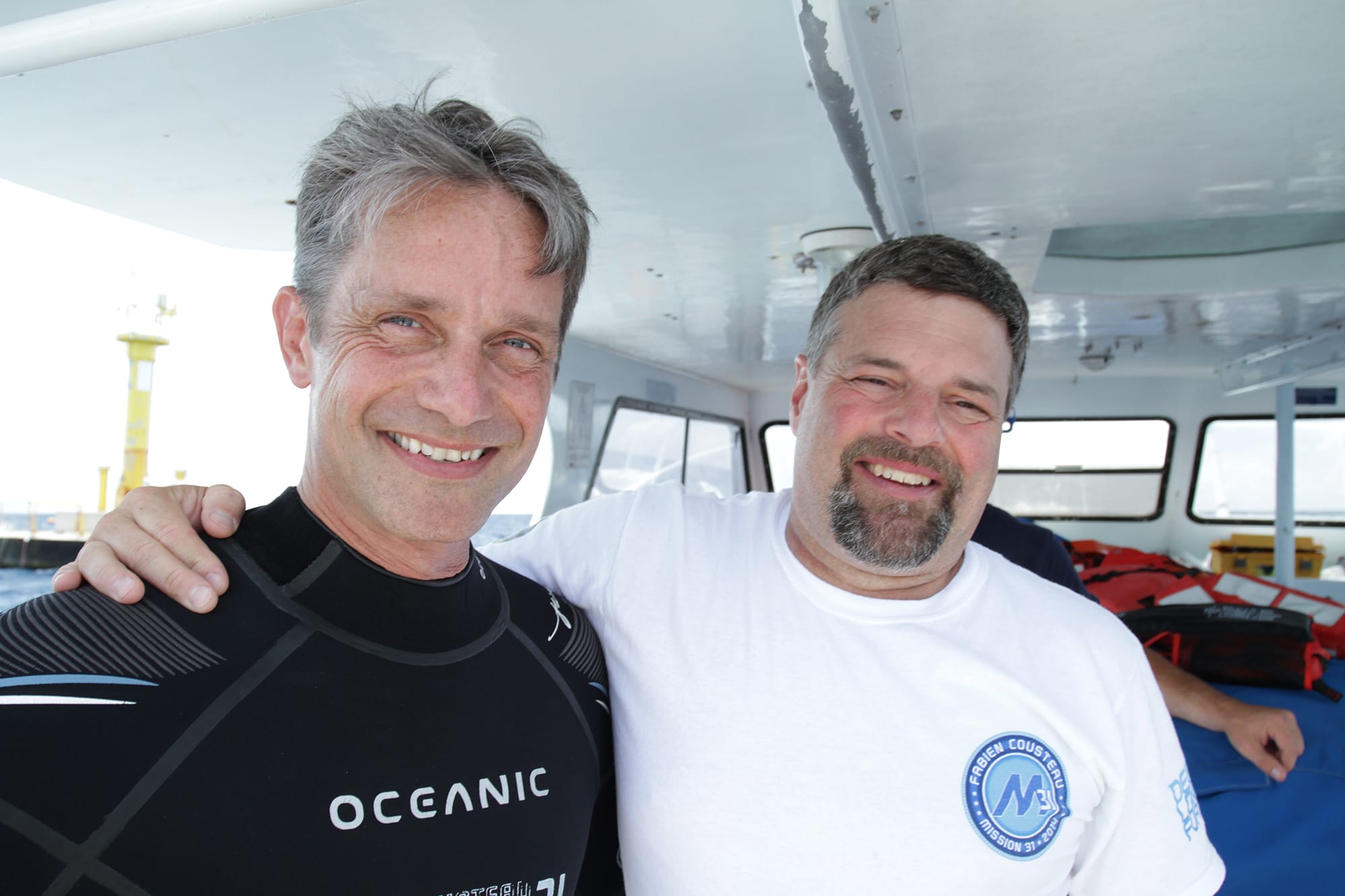In the world of ocean exploration, the name Cousteau sparks the imagination. On June 1, Fabien Cousteau, grandson of famed oceanographer Jacques Cousteau, began Mission 31, to live underwater for 31 days in the marine lab Aquarius.
Vancouver diver Billy Snook is one of the crew members documenting Cousteau’s expedition. Snook, 49, is the crew’s chief diver and a secondary cameraman. He checks and maintains the team’s diving equipment, while capturing images outside the Aquarius.
Snook became fascinated with scuba diving after a trip to Maui.
“It’s one of those things that I’ve always wanted to do.”
He has followed his passion across the globe, exploring the underwater landscapes from Papua New Guinea to the Puget Sound.
“(Scuba diving) forces you to be in the moment, it’s hard to get distracted,” he said. “There’s just so much beauty underwater.”
He opened Seven Seas Scuba 10 years ago in Fisher’s Landing, then expanded with another shop in Monterey, Calif. There, Snook began working for famed marine photographer Bob Talbot, learning about underwater filming and production. Snook also became friends with Matt Ferraro, the production director for Mission 31.
“He (Ferraro) and Fabien (Cousteau) are great friends. Matt and I really hit it off, and he asked me to be on the film crew.
“I go where my nose takes me. I’m really lucky to get these gigs. I’m just in the right place at the right time with the right skill sets,” he said.
The Aquarius is the world’s only underwater research lab, resting 63 feet beneath the ocean near Key Largo, Fla.
“The habitat is 9 feet in diameter and 40 feet long. It’s living in an environment (the size) of a school bus,” Snook said.
Only six aquanauts can occupy the space at one time. In addition to Cousteau, there will be two habitat technicians, two scientists and a cameraman living onboard. Only Cousteau and the two technicians will stay the full 31 days. Four mission scientists will conduct their own research, rotating positions at 16 days into the mission.
Landlubbers can watch a live video feed of the inside and outside of Aquarius at mission-31.com.
Snook also will assist Grace Young, a scientist from Massachusetts Institute of Technology, in her mission to capture a Goliath grouper’s feeding habits in real time using the Edgertronic camera, which takes images at 17,791 frames per second.
The aim of Mission 31 is twofold, said Snook. Mission 31 will commemorate the 50th anniversary of Jacques Cousteau’s own underwater mission, in which he lived underwater for 30 days on the Conshelf Two in 1964. And the crew hopes the mission will raise awareness about how vital the Aquarius is to marine research.
“Aquarius is unique, because it allows ocean researchers to concentrate their research,” he said. “They can get a whole lot done in a compressed amount of time.”
By living undersea, the researchers become acclimated to the water pressure, allowing them to explore the ocean for as much as nine hours at a time. In comparison, a typical surface dive is just one hour. Research that would likely take more than a year can happen in a 16 days, Snook said.
The crew also hopes to bring back that same excitement and wonder to marine science, said Snook.
“We’ve explored less than 5 percent of the abyss. It’s time to pay a little more attention to that, now that we can reliably explore these places,” Snook said.
Bits ‘n’ Pieces appears Fridays and Saturdays. If you have a story you’d like to share, email bits@columbian.com.




